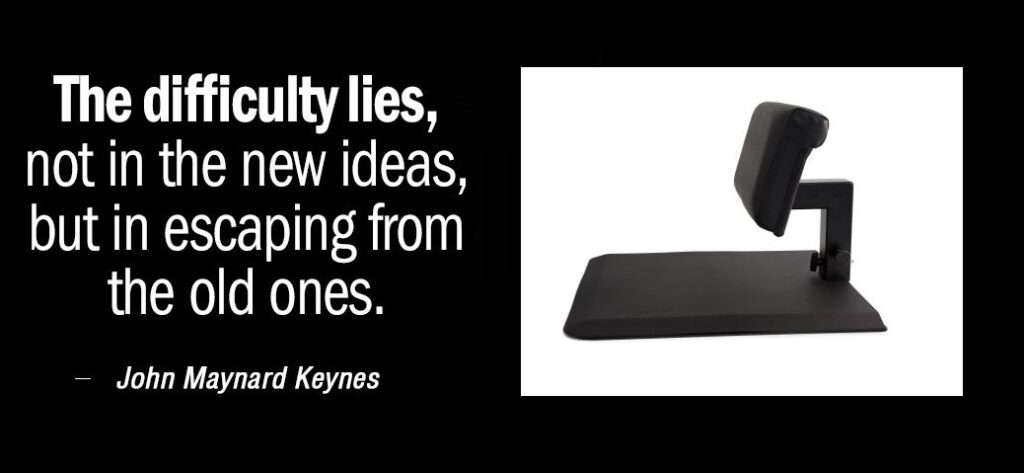
Sounds a bit cliché in these times of 7 second sound bites and reels. I mean, it would seem as if every one of them is someone’s idea of, a new idea. But there is still legitimate genuine innovation around, though it becomes ever harder to hold human attention. Everyone is convinced that they thought of everything and could not have possibly missed anything simple. When you consider that people mistake the internet for knowledge, it’s no wonder some have lost the ability to reason, let alone retain focus and attention.

As recent as the late 1800’s, most jobs performed by humans involved significant bipedal travel and very little stationary standing. From blacksmiths to farmers, to doctors who traveled to visit patients, we spent as much or more of time on our feet than we do today. The fatigue and exhaustion that came from these physically demanding jobs, was in fact, due to a “hard day’s work”.
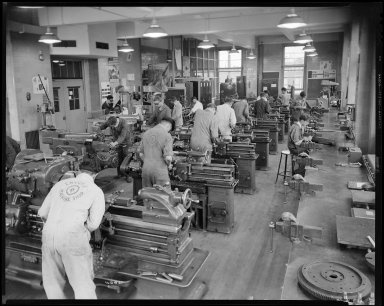
By the early 1900’s, work and opportunity had shifted to mass production and business discovered that having each person manufacture many identical widgets, made more sense than each person building one machine. So it began. The human race simply assumed that efficient bipedal travel also meant efficient bipedal standing. Generation after generation, the old worker accuses the younger worker of being incapable of performing “a hard day’s work”. But the fatigue and pain we feel now is different.
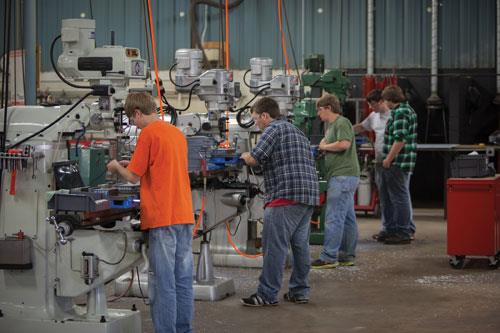
The more advanced and efficient the machines become, the more the workers stand statically to perform operations. The benefits humans once knew from movement and hip hinge movement was replaced by locked hips and balancing against sway. As workers experience fatigue and pain from holding these positions, the cognitive focus becomes impaired and their attention moves from the task, to relief.
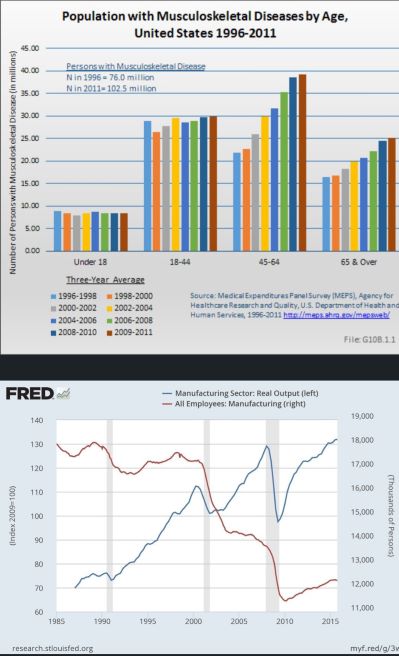
Though these figures are from 2011 and 2015, nothing has changed and in fact, have become more problematic. The top graph illustrates the rise in MSDs in the US from 1996 to 2011. Although advancements have been made in safe lifting, ergonomics and lean practices. we continue to see a growing problem. When we couple this with an aging population, placing more risk into the 45-64 group, we can easily see the need for change in thinking. The second graph illustrates the growing dynamic in manufacturing to use less workers to perform more output than ever before. Look closely and understand that as recent as 1990, the growth of automation had begun its staggering climb. The point is to simplify what business continues to miss. As we automate and choose output over workers, we continue to ignore static standing postures that lead to MSDs. There is a difference between bipedal travel and bipedal standing at a workstation for 30+ years performing repetitious tasks. You are seeing it now in mass production.

Business is depending on a growing number of experts specializing in productivity improvement and workplace wellness as they lose there grip on the human resources ability to put out output. We have become dependent on educators who sit at desks to train specialists to solve the problems “we have” with workers who stand all day, while the students sit at desks. What could go wrong?
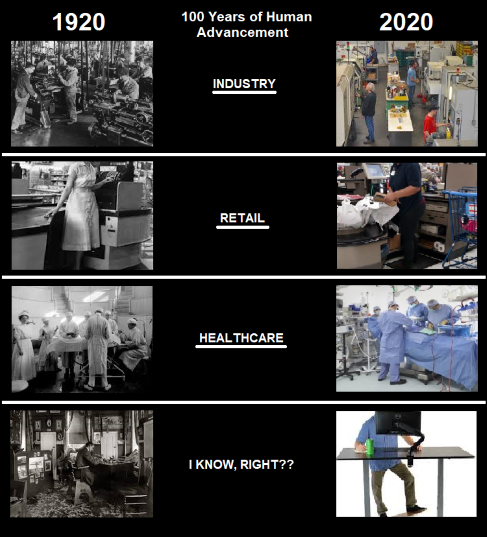
This is what goes wrong. We have not changed anything for the worker themselves in industry other than periodical legislation or mandates like safety glasses. They still stand just as their grandparents. Look at retail for instance, aside from the rounded spinning bag dispensers and scanner, what has really changed? Yet, the retailers wonder why workers want chairs. Healthcare is continuously preaching about physical fitness and preventative medicine, yet surgical staff and caregivers spend hours statically standing to work. That brings us to the genius of standing in the office. Sitting is bad, but standing without balance, invites sway and MSDs.
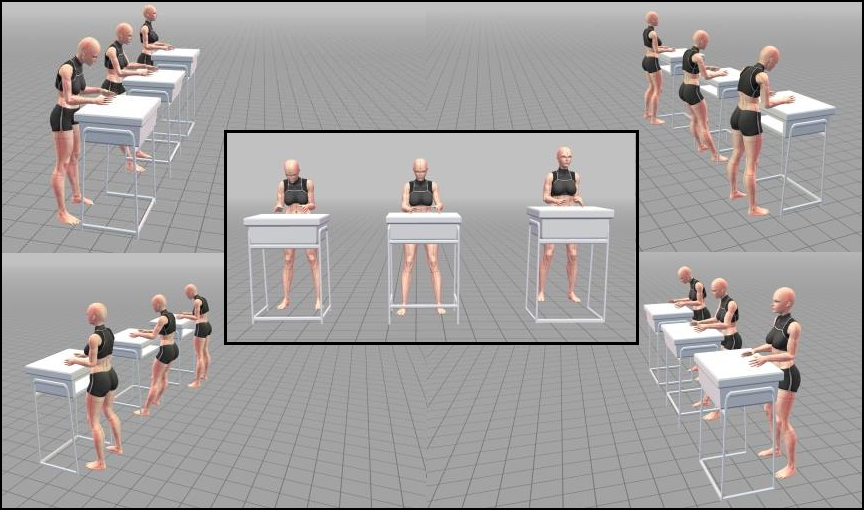
Effective work requires some stationary positions. But the problem is not as simple as “more movement”. The problem lies in the how we deal with the sedentary times in this upright existence. We can stand with locked knees like we do now leading to MSDs, lean back like chairs that invite disease and illness, or stabilize with a forward engaged stance like we do when we actually perform physical work or exercise.
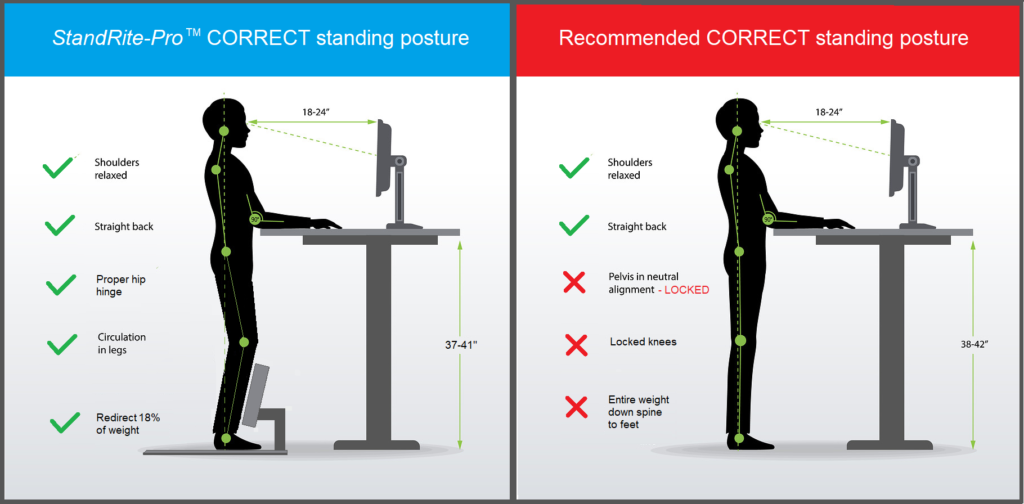

There is a growing call for concern from national safety organizations, business leaders and labor to look up and realize the trajectory we are on. People cannot evolve to static standing for hours at a time and still remain efficient at bipedal travel. Our feet would grow too large to support us and essentially end the era of “fleet footedness”. Besides, it would take 3,000 more years. The old thinking of automating more, and leaning up the movements that seem to be costing money are not working. We must instead, refocus on the causes of the fatigue and pain we see all around us. By providing a simple balance point for time of stationary standing, we can control postural sway just like chairs do, while allowing the benefits of improved circulation and heart rate from being upright. If we allow that balance point to provide stabilization that unlocks the knees, the hips will unlock reducing the forces in the lower back. This will reduce the fallout of the millions of repetitious movements throughout careers of over 90 million Americans who stand at work, not to mention the effects globally.
We can unlearn what we always thought, if we understand why we thought it. We thought we were becoming more efficient and more productive but now we know that we are causing lifetimes of pain and suffering, essentially killing people on their feet. We are no longer attracting new talent to come stand for us for 10 hours but we are seeing staggeringly higher costs to do business and the workforce is aging. The most intelligent people in the world have rolled a giant snowball up to the peak with exceptional perseverance and fortitude only to push right over the top of a hill. And now it is coming down on the whole world. Think differently. We did, because we are standing workers and our lives depended on it.
